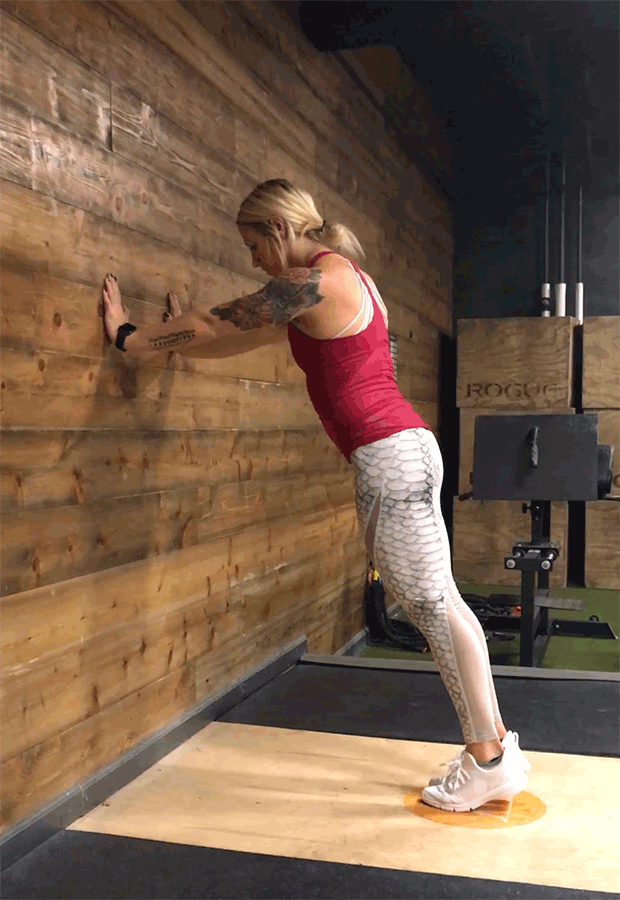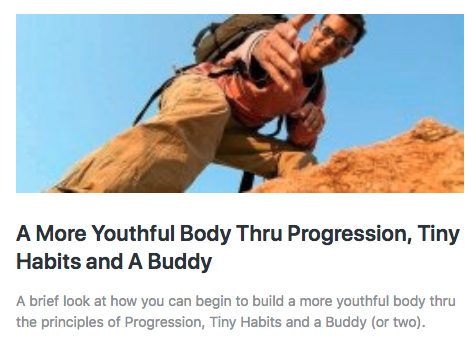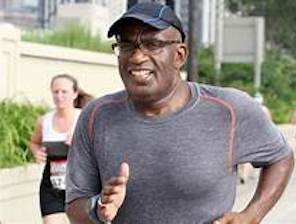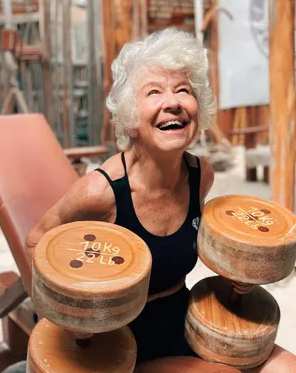Increase Your Healthspan and Get Lean: Follow the Science

You may increase your healthspan — the years your healthy — by eating more plant food, building muscle and getting rid of inflammatory senescent cells. Here’s how to do it…
What's in this post
5 Simple Lifestyle Habits
Increase Your Healthspan with Nutrition
Hormetic Effects Provide Beneficial Stressors
Phytonutrients Can Be Hormetic
Increase Your Healthspan with Exercise
Shrink Your Fat
Reduce Senescent Cells by Exercising
Let Al Roker and Joan Macdonals Inspire You
Your Takeaway (and your teeth)
You may not think of it in such terms, but surely you want to increase your healthspan. Healthspan is a different measure than lifespan, and the difference makes all the difference, as Dr. David Sinclair likes to point out.
Dr. Sinclair is among the world’s most prominent longevity scientists. (I’ve written about him here.) He often warms up an audience by asking, “Who wants to live to 100?.” Very few hands go up. Then he adds an important nuance: “Who wants to live to 100 as healthy as you are now?” Nearly everyone’s hand springs up.
This example marks the important difference between lifespan and healthspan — whereas, lifespan is the number of years you live, healthy or not, healthspan only marks the years you live healthily.
How to increase your healthspan is the focus of this post.
Increase Your Healthspan with 5 Simple Lifestyle Habits
The odds of living past age 110 are becoming increasing more likely, says a new study from the University of Washington. The researchers found that it’s “extremely likely” to see the record for the oldest human broken during this century. Frenchwoman Jeanne Calment holds that record. She died in 1997 at age 122 years and 164 days old.
According to lead author of the UW study, Michael Pearce, there’s a 68% probability that someone will reach age 127 by 2100, and a 13% probability someone reaches age 130. But back to Dr. Sinclair’s question — does anybody want to live that long unless somehow you could reach that lofty mark in good health?
Most people would answer, “no”, and would surmise that getting much past 80 years of age in robust health is a pipe dream; but, alas, various advancements in medicine and aging biology have influenced both people’s healthspans and potential lifespans.
A 2018 study from Harvard found that those who followed five simple habits increased life expectancy by up to 10 years:
- Eating a high-quality healthy diet
- At least 30 minutes or more per day of moderate to vigorous physical activity
- Keeping a healthy body weight
- Not drinking excessive amounts of alcohol
- Not smoking
In areas of the world where people live the longest, healthiest lives, also known as the “Blue Zones,” specific habits contribute to longevity, according to Dan Buettner, a National Geographic Fellow and journalist. For example, having at least three close friends who you can count on for emotional support, walking daily and taking a 20-minute nap five days a week are all things that have been shown to improve lifespan.
That all sounds about right, but the devil’s in the details. Someone’s “healthy diet” may be a fat-laden sugar fest to you. So, I want to unpack some of this, beginning with diet, and then turn to exercise (and even teeth). But before I do, allow me comments on alcohol and smoking.
Regarding alcohol, less is more for increasing healthspan. According to the Mayo Clinic, moderate alcohol use for healthy adults generally means up to one drink a day for women, and up to two drinks a day for men.
Examples of one drink include:
- Beer: 12 fluid ounces (355 milliliters)
- Wine: 5 fluid ounces (148 milliliters)
- Distilled spirits (80 proof): 1.5 fluid ounces (44 milliliters)
Regarding #5 above, smoking, well, if you do smoke, do everything I suggest in this post anyway. Perhaps as you progress with the lifestyle choices that can increase your lifespan, you’ll envision a new you — a non-smoker.
Increase Your Healthspan With Nutrition
Recently published research suggests that eating two servings of fruit and three servings of vegetables is associated with lower mortality rates. Does this suggest that a plant-based diet is the best to increase your healthspan?
Most likely, yes.
The Harvard study referenced above underscored the importance of a high-quality, healthy diet, but it didn’t specify what that looks like, but a 2019 study did.
To increase your healthspan and longevity, you need to experience hormesis and consume plenty of phytochemicals (or phytonutrients; same thing).
Hormetic Effects Provide Beneficial Stressors
Hormesis is defined as a phenomenon in which a harmful substance gives stimulating and beneficial effects to living organisms when the quantity of the harmful substance is small. You may have heard the adage, what doesn’t kill you makes you stronger. That’s hormesis.
An example many people can identify with is the process by which lifting weights make micro tissue tears (the catabolic phase) in muscle, thereby stimulating the body to repair and make the muscle bigger and stronger (the anabolic phase).
Examples that many people are less likely to identify with are caloric restriction and intermittent fasting. Along with physical exercise, restricting calories from time to time works through the principle of hormesis to improve various health markers in various organisms studies by activating so-called “stress resistance pathways”, says the 2019 study, Hormetic Effects of Phytochemicals on Health and Longevity.
Phytonutrients Can Be Hormetic
Phytonutrients are various compounds produced by plants that commonly have beneficial effects on the body. They’re found in fruits, vegetables, beans, grains and other plants.
Quoting from the 2019 study:
Phytochemicals from fruits, vegetables, and mushrooms produce beneficial effects on health and longevity by modulating stress resistance pathways in a manner similar to caloric restriction, intermittent fasting, and exercise. Phytochemicals also promote intestinal homeostasis by improving gut barrier integrity and short-chain fatty acid production and by modulating the composition of the gut microbiota. Common sources of phytochemicals include not only fruits, vegetables, and mushrooms, but also organic foods and dietary supplements.
And a 2015 study says:
Recent findings indicate that meal timing is crucial, with both intermittent fasting and adjusted diurnal rhythm of feeding improving health and function…
Yes, turns out that When You Eat Is More Important Than What You Eat, Says Dr. Panda.
All this distill down to:
Eat like a gorilla, but stop hours before you go to bed (unless you’re a mouse).
 OK, we’ve addressed what to eat and linked to when to eat. Now let’s move on to moving; ie: what those legs and arms of yours are made for.
OK, we’ve addressed what to eat and linked to when to eat. Now let’s move on to moving; ie: what those legs and arms of yours are made for.
Increase Your Healthspan With Exercise
Regular readers are perhaps weary of me blathering on about exercise. But the simple truth is that you can forget about living youthfully in your golden years if you don’t exercise regularly. And by exercise, I mean three components:
- Mobility — moving those joints
- Cardio — pumping that heart
- Muscle making — keeping and/or growing muscle
I address those three in my six-part series, The Functionally Fit Fast Workout. If you’re short on time (or interest), you can dabble with my three-part series, How To Get Lean and Muscular.
If you have zero interest, let Al Roker and Joan MacDonald inspire you (see below).
I’d like to point out that if you can’t imagine yourself lifting weights, or lifting yourself, it’s time to do some re-imaging. Even 90-year olds can build muscle through resistance training (weight lifting and calisthenics), and if you’ve never lifted anything heavier than a Big Mac, you can being by simply pushing yourself away from the wall.

A wall push can be the beginning of your strength training. Her hands should be further down the wall, such that her thumbs would be about where the top of the chest touches.
Or how about:
Do you know what happens if you lift weights, in addition to getting stronger?
You shrink your fat, but in a different way that you imagined.
Shrink Your Fat
One of my favorite health journalists Gretchen Reynolds explains how to shrink your fat in her article, Lifting Weights? Your Fat Cells Would Like to Have a Word.
For those of you who don’t read it, here’s the skinny:
- Although building muscle requires time and repetition, some of the metabolic effects of weight training on fat stores seem to occur immediately after exercise.
- Muscles release a cascade of hormones and other proteins after exercise that enter the bloodstream, course along to various organs and trigger biochemical reactions there, in a process known as cellular crosstalk.
- Bits of bits of microRNA generated by muscle building entered fat cells and helped direct the breakdown of fat into fatty acids, which other cells then can use as fuel, reducing fat stores. In effect, weight training was shrinking fat by creating vesicles in muscles that, through genetic signals, told the fat it was time to break itself apart.
Now, if all the healthspan benefits I’ve gone over so far are insufficient to get you munching on broccoli sprouts whilst you do some squats, I’ve got one more mighty arrow in my quiver: Exercise is a senolytic!
Reduce Senescent Cells By Exercising
Unsurprisingly, I’ve written about senescent cells. In the post, Can 4 Natural Compounds “Eliminate Senescent Cells” and Prolong Your Healthy Lifespan?, I introduce supplements you can take to help your body reduce it’s senescent burden.
Why is this important?
Because, as this 2018 study shows, cellular senescence leads to tissue dysfunction, inflammaging (chronic inflammation) and accelerated aging. Basically, this happens because senescent cells — often referred to as “zombie cells” — are neither dead nor alive, but they do secrete compounds that are toxic to healthy cells. Moreover, the number of senescent cells someone has increase as people age (that’s the bad news), but studies on mice show that they can be removed and potentially increase their lifespans (that’s the good news).
Yes, indeed, we can kill off senescent cells and their inflammatory secretions with senolytic supplements (and drugs), caloric restriction and exercise.
UPDATE (5/7/22): As I explain here, a new study casts shade over the effectiveness of fisetin as a senolytic.
Since you’re wondering, I’ll list the three over-the-counter senolytics, and then speak to the effect of exercise on senescent cells:
- Quercetin, a plant polyphenol from the flavonoid group;
- Piperlongumine, a natural product derived from the fruit of the Asian Long pepper; and
- Fisetin, a flavonoid and antioxidant.
Turning to the impact that exercise has on reducing the number of senescent cells, a recent human clinical study showed a decrease in senescent cells in active muscles. This means muscles should be able to perform at a “younger” level due to this clearing away of senescent cells. This is an anti-aging remedy for the muscle, promoting new healthy cells in the area, and decreasing inflammation form the proinflammatory cytokine secretion from old senescent cell build up.
So, clearing some senescent cells improves muscle function, but what about the reverse — does improving muscle function through exercise help reduce senescent cells?
Yes.
Again, the reason that exercise reduces senescent cells has to do with chronic inflammation, which senescent cells promote. A 2020 study shows that exercise training may exert an anti-inflammatory effect:
“… although aging led to a proinflammatory profile within blood and muscle, lifelong exercise partially prevented this and generally preserved the acute inflammatory response to exercise seen in young exercising men. Lifelong exercise may positively impact muscle health throughout aging by promoting anti-inflammation in skeletal muscle.”
In conclusion, imagine yourself lifting weights, huffing and puffing… and then go do it.
Let Al Roker and Joan MacDonald Inspire You
Al Roker is a pretty famous fella, both because he’s a network TV anchor, and because he’s very publicly lost a lot of weight — more than 100 pounds (45 kilograms). He’s also recovered from an “aggressive” prostate cancer diagnosis. Unsurprisingly, for many he’s inspirational.
So, how did he do it?
Interval training.
For Al Roker, this was a mix of walking and running. As described in this MSN article, the strategy is also known as the Galloway Method, named after Jeff Galloway, a former Olympic Runner. I don’t know what’s special about his method, but with interval training you pulse back and forth between doing something hard and doing something similar that’s not hard.
For instance, you walk fast for a bit, and then run for a bit. Eventually, you can run longer. In Al’s case, “I had to run four minutes, walk two minutes, and do that for an hour.”
My hat off to Al, but he’s got nuttin on Joan MacDonald.
Joan MacDonald proclaims that she was sick and tired until she began weight lifting at the age 0f 71, shattering preconceptions about what’s possible in your eighth decade.
Before she started weight lifting, Joan weighed 198 pounds (90 kilos), and had rising blood pressure, kidney troubles, and on medication for cholesterol and acid reflux. Now at 75, that’s all gone — replaced by a new, strong body.
“There is a misconception that people over 65 cannot produce hypertrophy [growth] of the muscle,” says Mark Peterson, an associate professor of physical medicine and rehabilitation at the University of Michigan. “Muscle is a tissue that can adapt with stimulus.” The key is to check with a doctor first, and start slowly.
Says Joan:
“I still have to come to terms with myself, that I have changed that much. People say: ‘Gotta learn to love yourself!’ When you first start out, you go: ‘What’s there to love?’ That’s how I felt. But I can look in the mirror now and not turn my head.”
Be like Al.
Be like Joan.
Your Takeaway
Since I’ve been teasing about it, let me first, let me turn to your teeth.
Brushing and cleaning your teeth can stave off your risk of heart disease and dementia. Having good oral hygiene gets rid of chronic low-level inflammation that can hamper your immune system.
This is a bit personal to me, because my father got an infection from his teeth that put him in the hospital. He complained that his hands and fingers were too big to manipulate the dental floss after brushing. Well, somehow they became smaller after he returned home, and he started flossing.
And now let’s get to the five things to remember about increasing your healthspan:
- Eat plants, such as veggies, beans and lentils, because they’re rich in phytochemicals that both nourish your body and activate hormesis.
- Periodically under-eat; again, to activate hormesis.
- Do at least 30 minutes or more per day of moderate to vigorous physical activity, especially weight lifiting or calestentics that will reduce senescnet cells (decrease inflammation), improve metabolism, and bust up fat.
- Minimize the alcohol to one or two drinks per day (if you must)
- Don’t smoke (that includes vaping!)
Last Updated on November 8, 2022 by Joe Garma






